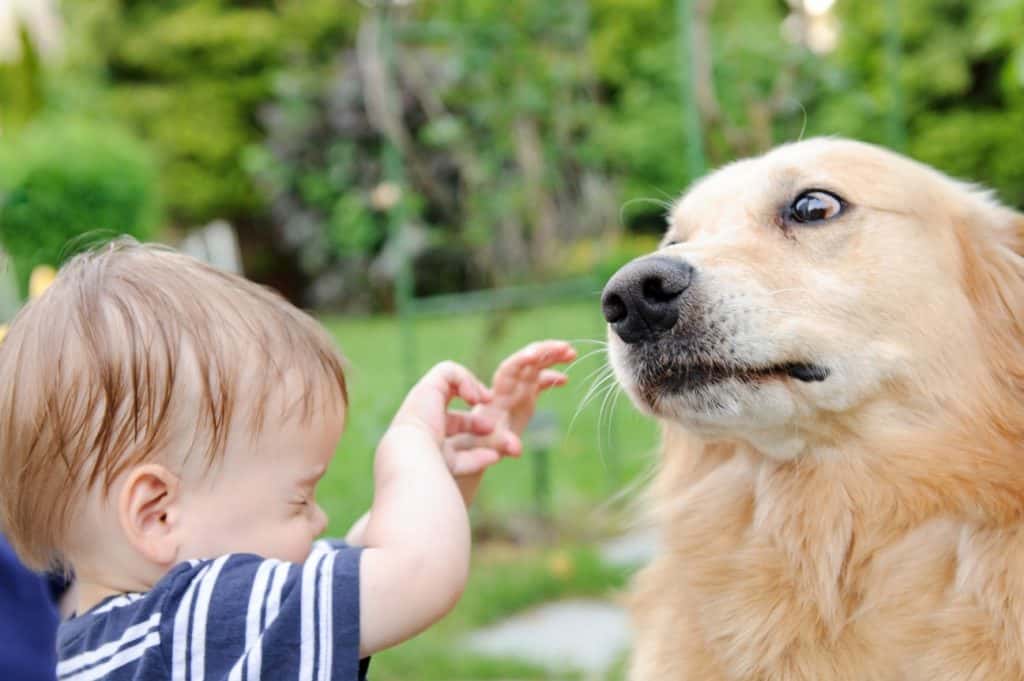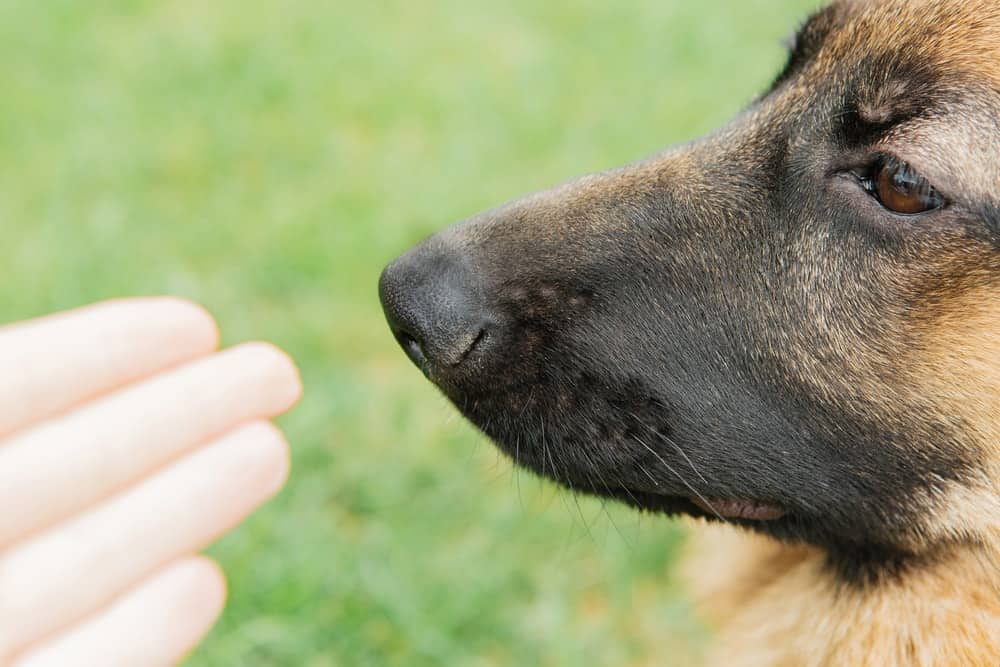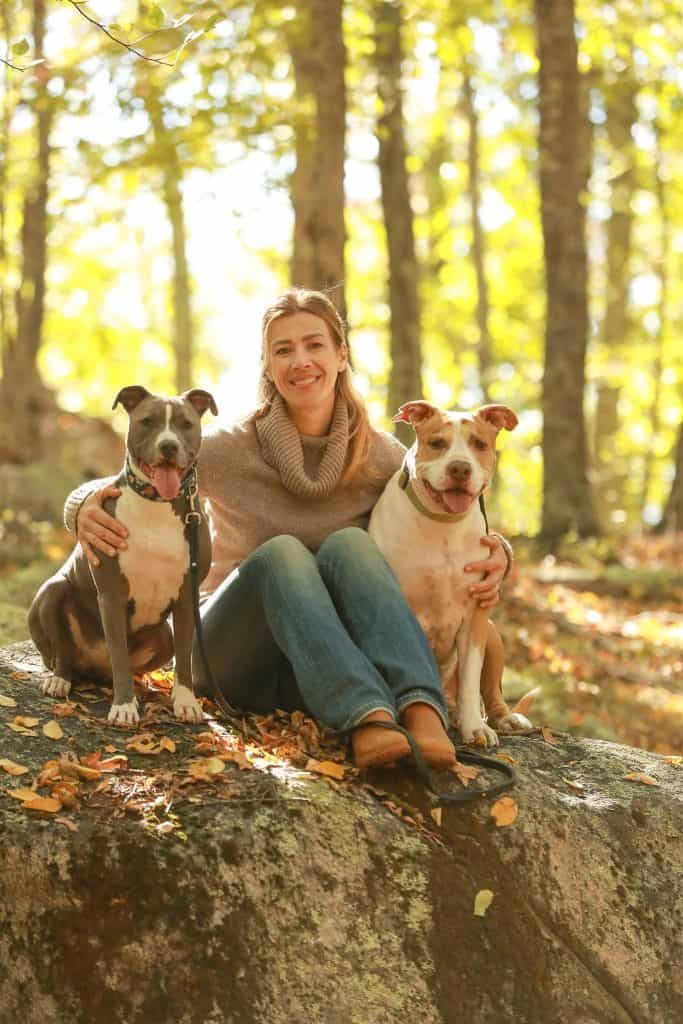“This post contains affiliate links, and I will be compensated if you make a purchase after clicking on my links.”
By Johnna Devereaux C.P.N.
Dogs are a wonderful part of many children’s lives. But fearful, aggressive, or even energetic dogs can pose a risk. Teaching children to respect living beings of all shapes, forms and sizes is an important lesson parents are tasked with instilling when raising children.

As adults, sometimes we’re distracted by a puppy’s cuteness or our child’s eager curiosity to remember that the interaction between them is an opportunity to teach safe behavior.
Why Dogs Can Be Aggressive Around Children
Most dog aggression towards children is based on fear. That’s because children may behave erratically, move in unpredictable ways and make loud or sudden noises. Children are often very interested in dogs and may want to touch them even when they are showing signs of fear or aggression. What’s more, they are at the same level as the dogs due to their height, and because they are often interested in similar things (toys, food), this puts them at greater risk. Children also may behave inappropriately towards dogs by pulling their tails, fur or ears.
Safe Behavior Around Dogs Is Learned
According to the CDC, 800,000 people seek medical attention for dog bites each year, half of which are children. Dog bites are most prevalent among children ages 5 to 9 and are more prevalent among boys. Children are most likely bitten by dogs they know; children under 6 are often bitten in circumstances involving food or possessions, while older children when approaching or invading a dog’s territory. This risk increases when living in multiple dog households. Family pets inflict about two thirds of dog bites to children.
Children do not know instinctively how to safely behave around dogs, and must be taught. Therefore teaching children how to positively interact with the canine world is important for both the child’s safety and the well-being of our dogs, too.
Here are 3 strategies to help teach children how to safely interact with dogs.
Ask for permission
Never approach, touch, or pet a dog without asking the owner/handler’s permission first. This may seem obvious, but it is often the reason many children are victims of dog bites. We sometimes take for granted that all dogs are good with kids. Even friendly dogs, the family pet included, can act out of character if the animal isn’t feeling well, is hungry, or is over-tired.
Approach quietly and calmly
Excitement = energy. This is especially hard for little ones to learn, but it is an invaluable lesson to instill as early as possible.
When a young child or toddler sees a cute furry friend, their voices tend to get high and their bodies move faster and more erratically. A friendly pet receives these signals as a time to play and proceeds with great exuberance. By contrast, a dog that is sensitive or fearful may see this as a reason to run away and hide. Either scenario usually ends in the same way: the dog sees a fun game of chase, which may result in the child getting hurt.
To prevent this, encourage children to always be calm and quiet around dogs.
Make introductions with an open hand
Another way to ensure your child has a positive interaction with every dog they meet is to teach them how to do it correctly. Dogs do better given space to smell their new friend. Always approach a dog calmly with an open hand, palm faced downward to let them smell you.

You can then instruct your child to deliver a treat with an open hand, palm faced up. Not only does this allow the dog space to lick for the treat rather than bite for it, it also allows your child to experience the joyful sensation of a wet nose and whiskers on their hand.
These introduction strategies are only the most basic guidelines, and additional research should be undertaken when introducing a new dog or baby into your household. If followed, however, you can lay the foundation for positive interactions that will last a lifetime.
As the old saying goes; “Dogs teach us a lot of things, but none more important than to love unconditionally.” May your child be gifted with this kind of special love between human and dog.
This article is for informational purposes only. It is not, nor is it intended to be, a substitute for professional training advice. If you have concerns or specific needs regarding your dog’s behavior around children, consider working with a Positive Certified Trainer or Certified Canine Behavior Consultant.

Johnna Devereaux, CPN is a Clinical Pet Nutritionist, the Director of Nutrition & Wellness for Bow Wow Labs and Owner, Fetch RI. www.bowwowlabs.com


















